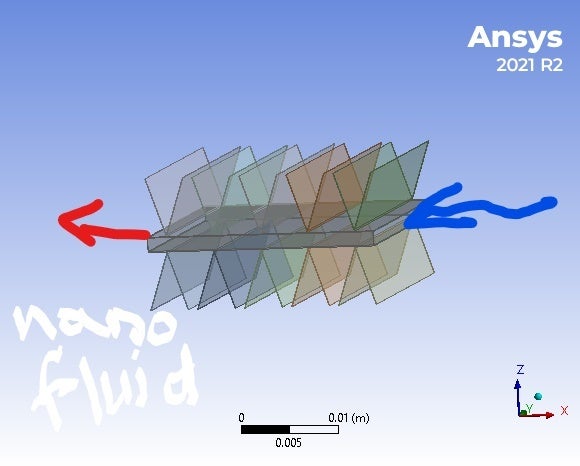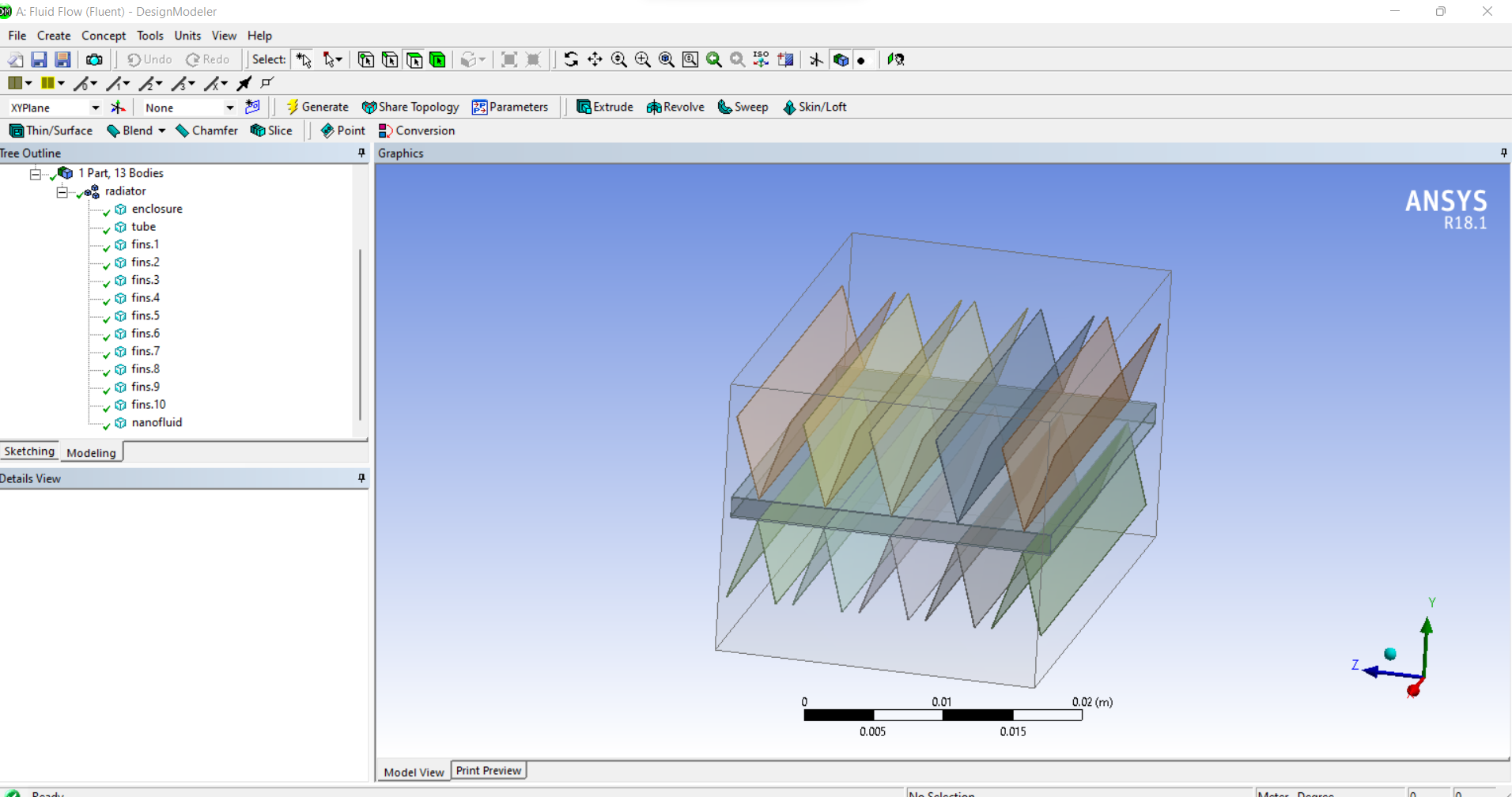-
-
October 26, 2021 at 9:29 am
sadhurajesh
SubscriberOctober 26, 2021 at 10:02 amRob
Forum ModeratorAssuming the flow over the fins is in the y-axis I'd restrict the outer domain so it's the same as the finned section in the x direction and extend in z and y.
October 26, 2021 at 11:01 amsadhurajesh
SubscriberOctober 26, 2021 at 12:57 pmRob
Forum ModeratorFirst off you'll need many more cells across the flow nanofluid channel: you need at least 6-10 cells across a flow channel to have a hope of predicting the flow. The other problem you have is that the fins are interacting with the bounding box to give skew (distorted) cells.
Have you done any of the tutorials? If not, go and review those and the other help videos. You also need to consider how much flow channel is needed to allow the flow profile to develop.
October 27, 2021 at 9:11 amsadhurajesh
Subscriberhow to draw a bounding box without touching fins?
October 27, 2021 at 10:03 amRob
Forum ModeratorMake it bigger?
October 28, 2021 at 4:40 amsadhurajesh
SubscriberIf I make it bigger, there is a problem that is the mixing of two fluids which needs to be avoided. so, how to solve it?
October 28, 2021 at 11:01 amRob
Forum ModeratorExtend the inlet/outlet of the channel?
Viewing 7 reply threads- The topic ‘I am trying to find heat transfer rate from radiator through fins.’ is closed to new replies.
Innovation SpaceTrending discussionsTop Contributors-
4723
-
1565
-
1386
-
1242
-
1021
Top Rated Tags© 2026 Copyright ANSYS, Inc. All rights reserved.
Ansys does not support the usage of unauthorized Ansys software. Please visit www.ansys.com to obtain an official distribution.
-
The Ansys Learning Forum is a public forum. You are prohibited from providing (i) information that is confidential to You, your employer, or any third party, (ii) Personal Data or individually identifiable health information, (iii) any information that is U.S. Government Classified, Controlled Unclassified Information, International Traffic in Arms Regulators (ITAR) or Export Administration Regulators (EAR) controlled or otherwise have been determined by the United States Government or by a foreign government to require protection against unauthorized disclosure for reasons of national security, or (iv) topics or information restricted by the People's Republic of China data protection and privacy laws.














